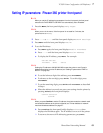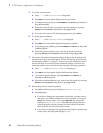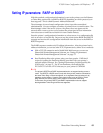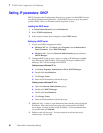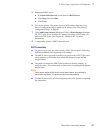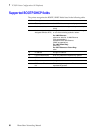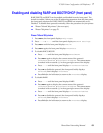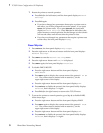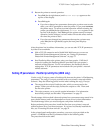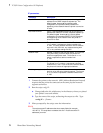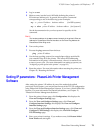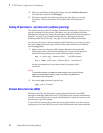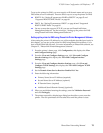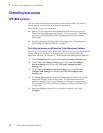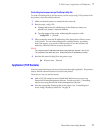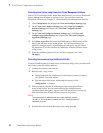PhaserShare Networking Manual
71
TCP/IP Printer Configuration (All Platforms)
7
8.
Return the printer to normal operation:
a.
Press Exit (the far right button) until Network Settings appears on the
top line of the display.
b.
Press Exit again.
■ If you have changed any parameters that require a printer reset to take
effect, you will be prompted to reset the printer. If you press Confirm,
the printer resets. To return to normal operation without resetting the
printer, press Exit (the far right button); Printer Menu appears on the
top line of the display. Press Exit again; the printer returns to normal
operation, but the changes you have made will not take effect until the
next time the printer is reset.
■ If you have not changed any parameters that require a printer reset,
press Exit (the far right button) again; the front panel displays
Ready.
After the printer has its address information, you can set other TCP/IP parameters
by either of two methods:
■ With a TCP/IP connection and a World Wide Web browser, you can use
PhaserLink Printer Management Software; see “Setting IP parameters:
PhaserLink Printer Management Software” on page 73.
■ Send PostScript files to the printer using your host spooler. UNIX shell
scripts for creating the PostScript files are provided with your printer’s
network utilities software. For PC environments, the PostScript files for
setting other TCP/IP parameters are included with your printer’s network
utilities software.
Setting IP parameters: PostScript utility file (UNIX only)
Use the config-IP script to create a PostScript file that sets the printer’s IP addressing
parameters. The config-IP script is provided with your printer’s network utilities
software. Keep the following points in mind when running the config-IP script:
■ The output of the script is PostScript code, which you must send to the
printer. When you run the script, redirect the output to a file. Then send
the file to the printer.
■ The script prompts you to provide certain information. For information
about these prompts, see the tables “IP parameters” on page 72.
The advantage of this method is that each printer has a permanent setup stored in its
non-volatile memory and is not dependent on a boot server for boot information.
The disadvantage is that you must configure each printer individually.
Before performing this procedure, install the files from your printer’s network
utilities software on to your host computer. If you have not already installed the
files, see “Extracting files from unix.tar” on page 52.
In the printer-based configuration procedure, you use a script provided on the
printer’s CD-ROM to set the IP parameters listed in the following table.
The procedure follows the table.



